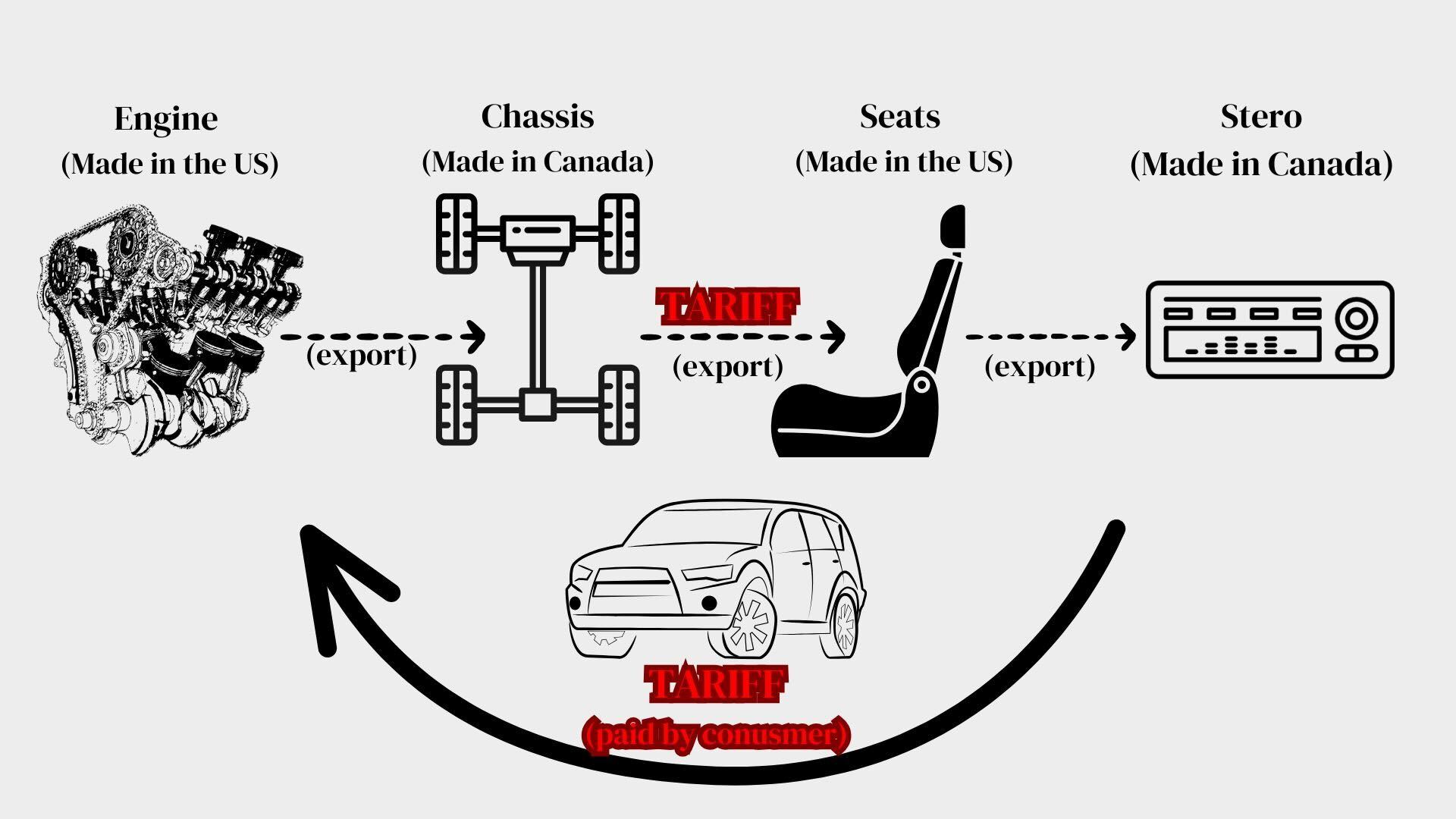Mason professor explains what tariffs are and how they affect us
BY BRIAN A. HAYUM, STAFF WRITER
Interest rates. Gross domestic product. Supply and demand. Americans are subject to financial terms that have major implications for their financial health. At the outset of President Trump’s second presidential term, the term “tariff” has become a staple of the Trump administration’s foreign economic policy.
Tariff refers to a tax placed on imported goods and services. That tax represents a percentage of the price of the product being imported. For example, if the U.S. were to place tariffs of 10 percent on baguettes imported from France, a $10 loaf would be charged a tax of $1 when it arrives at the border. To offset costs, price increases are passed down to the consumer.
On Feb. 1, The White House announced that President Trump will implement a 25% additional tariff on imports from Canada and Mexico and a 10% additional tariff on imports from China. President Trump said the increased tariffs is a retaliatory strike against all three countries’ response to the U.S. fentanyl crisis. “The extraordinary threat posed by illegal aliens and drugs, including deadly fentanyl, constitutes a national emergency under the International Emergency Economic Powers Act (IEEPA).” The announcement added that the tariffs will remain in place until “the crisis is alleviated.”
In response, leaders from all three countries are considering potential action to defend against the effects of these tariffs. These measures could come in the form of retaliatory tariffs, according to the BBC. Canada prepared a list of American goods with the intention of imposing retaliatory tariffs in response to the U.S.
Canada’s Internal Trade Minister Anita Anand recently said in an interview that Canada is “steady at the wheel.” Further stating that, “We are prepared for any eventuality, but we will at every turn defend our country’s economy.”
“In modern times, they [tariffs] have almost always been used as a negotiating tool,” said The New York Times White House Correspondent, David E. Sanger. “What makes President Trump’s move against Mexico, Canada, and China different is that he seems uninterested in pursuing deals,” Sanger writes.
Trump argued that these tariffs will curb the flow of immigrants and drugs while simultaneously enriching American citizens.
In his inaugural speech, Trump said, “I will immediately begin the overhaul of our trade system to protect American workers and families. Instead of taxing our citizens to enrich other countries, we will tariff and tax foreign countries to enrich our citizens.”
However, George Mason Economy Professor, Alex Tabarrok, argued that these tariffs will do the opposite.
“I think people have this idea that tariffs are about protecting American businesses, protecting jobs, but it’s important to recognize that this also raises the costs of American businesses,” said Tabarrok. “We have benefited tremendously from globalization. Walk into your local supermarket and look at all of the products and you’ll see that they’re from all over the world.”
According to a report by the USDA, “Canada and Mexico are the United States’ first and third largest suppliers of U.S. agricultural imports.” The tariffs, Tabarrok argues, will hurt all three North American countries. “We have integrated the Canadian, U.S. and Mexican economies to the benefit of all three. So, to now disrupt that is just creating chaos and uncertainty, and it’s making our allies upset.”
Evidence of this integration is seen in the auto industry, Tabarrok explains. “It is very common for auto parts to cross the border multiple times. So, the engine moves from Canada to the U.S. and they put in some seats… then the car moves back to another plant in Canada… back to the U.S., and then it might go to Mexico.” These tariffs not only disrupt the integration of these economies, but they also have precedents that show their ineffectiveness.
During Trump’s first term, economic research by the Associated Press found the total tariffs collected by his policies equaled less than 0.3% of GDP.
Recently, The White House announced that a 25% tariff on steel imports would be restored and an existing tariff on aluminum imports would be raised to 25%. A call by the Trump administration to “protect America’s critical steel and aluminum industries, which have been harmed by unfair trade practices and global excess capacity.”
Tabarrok said otherwise, “It is not the case that tariffs save jobs, they save some jobs, but they also kill other jobs.”
Tabarrok said in continuation, “They save jobs in the import-competing industry, but they kill jobs in the export industry. The problem is that the jobs in the import industry are very visible but the jobs you kill in the export industry are much harder to see.”
Companies and their investors have started bracing for the potential rising costs due to these tariffs, which are set to take effect on Mar. 4. According to a report by Goldman Sachs, “For the stock market, every five-percentage-point increase in the U.S. tariff rate is estimated to reduce S&P 500 earnings per share by roughly 1-2%.” Resulting in potential price increases from large-scale companies, layoffs, business shutdowns, and more.





